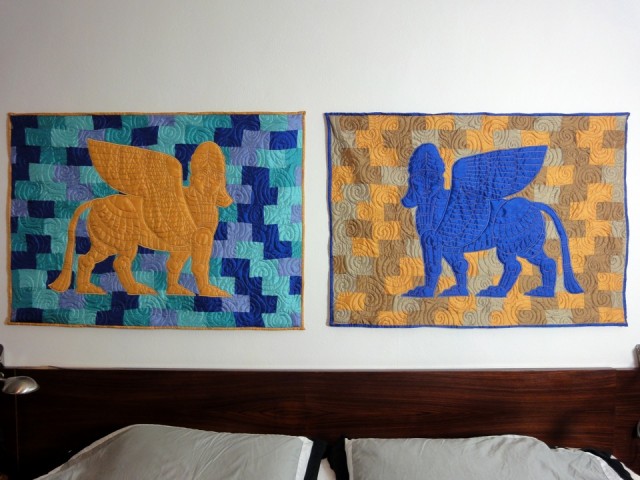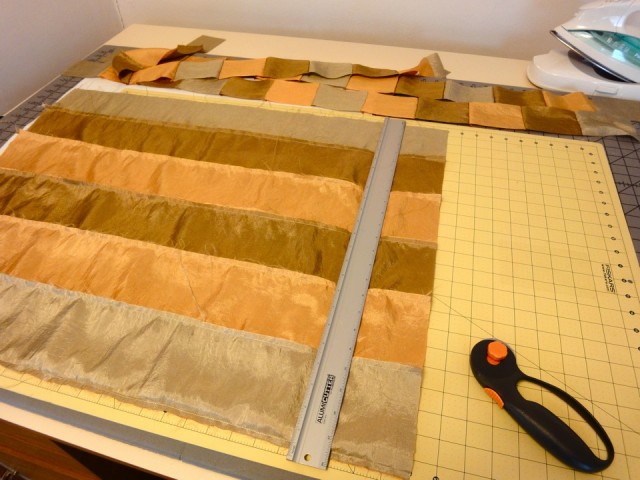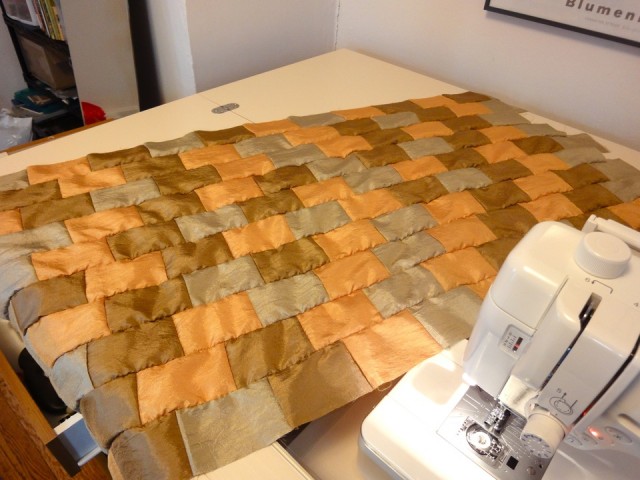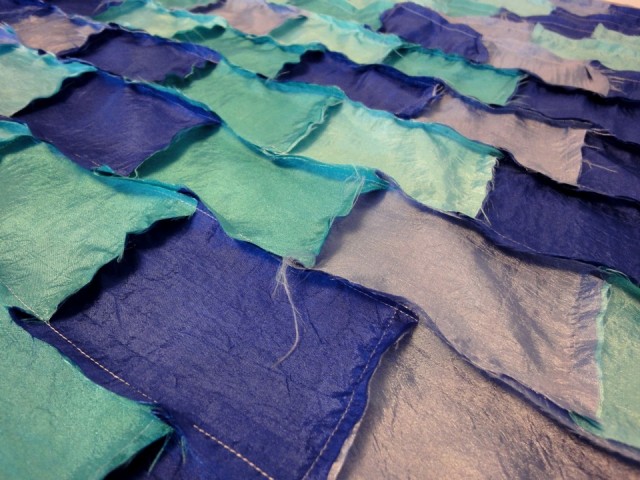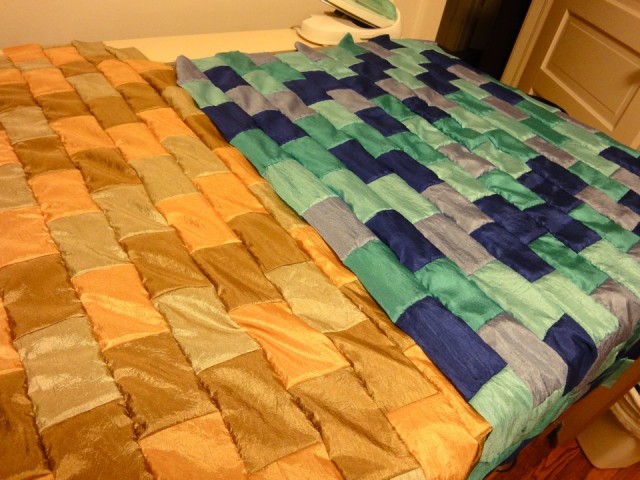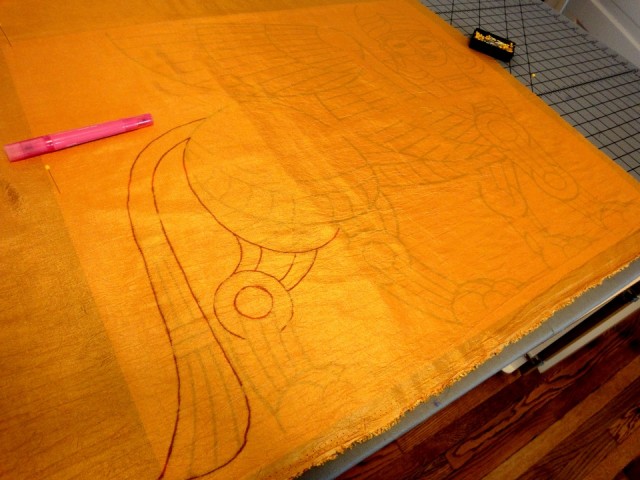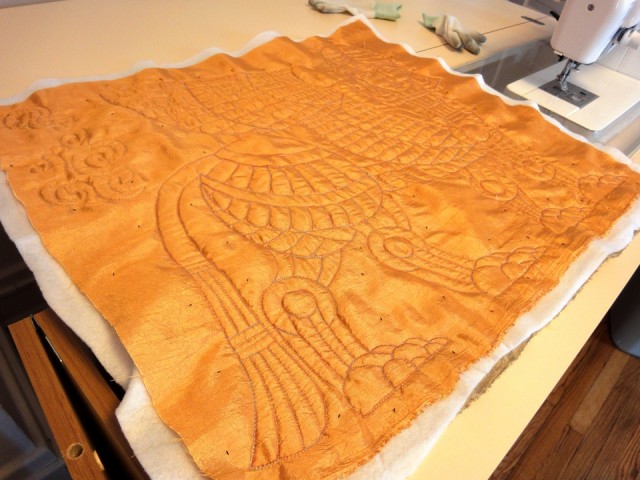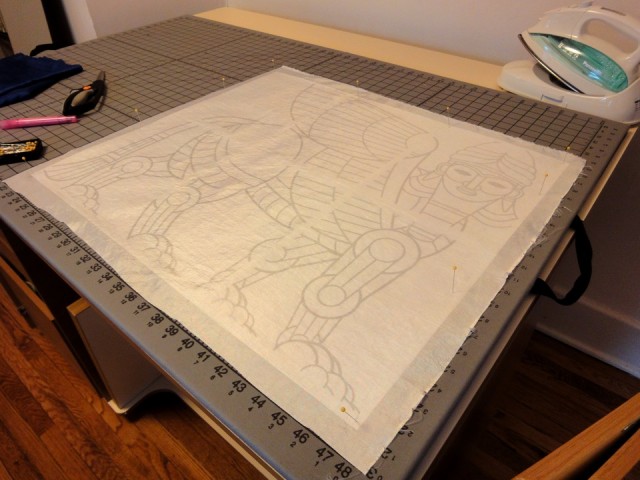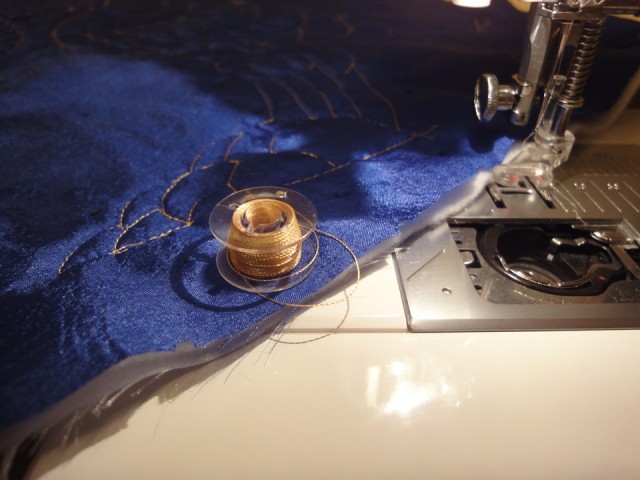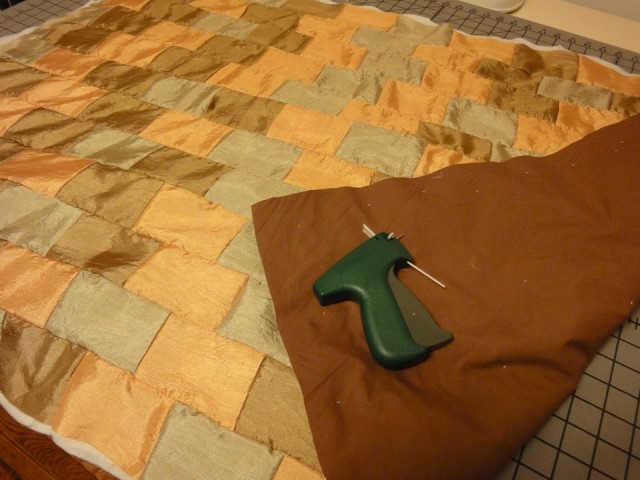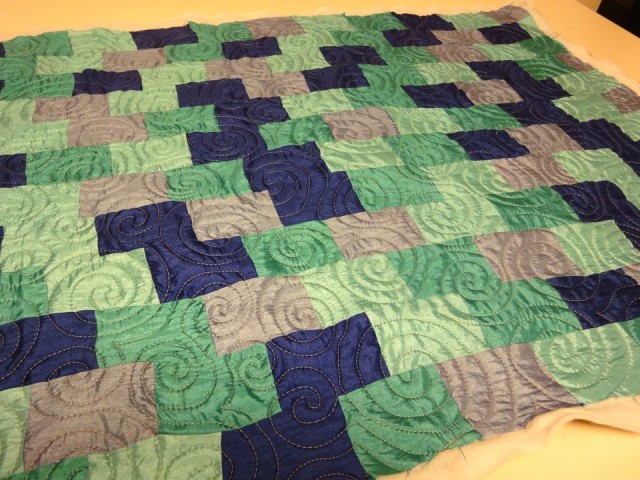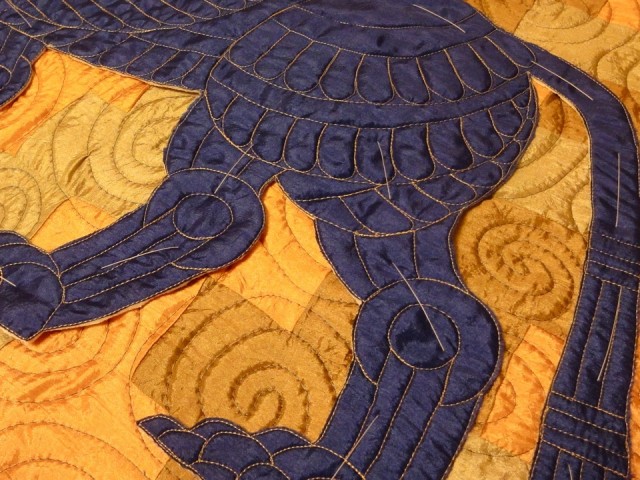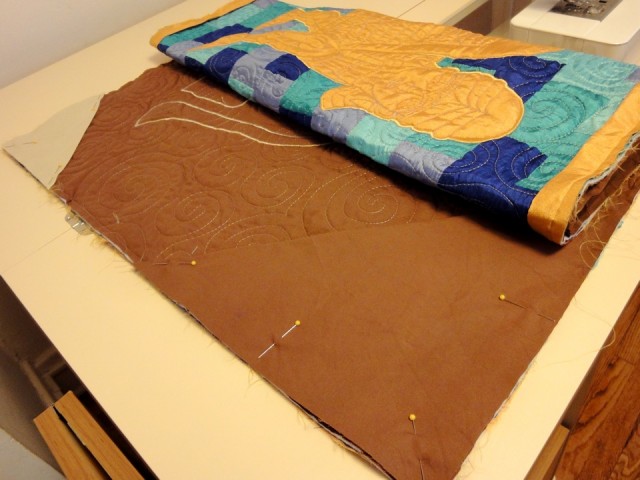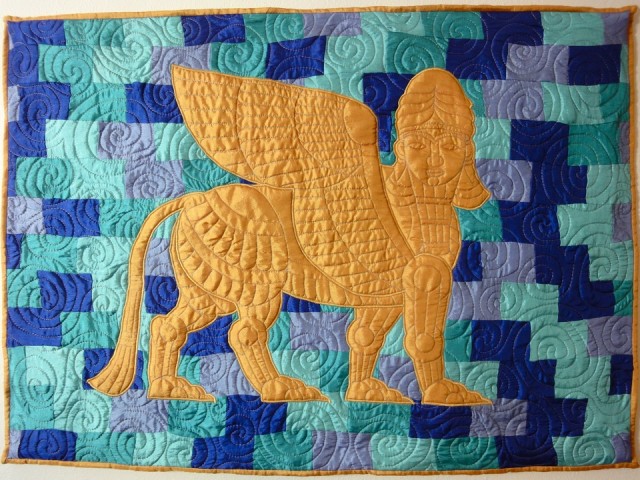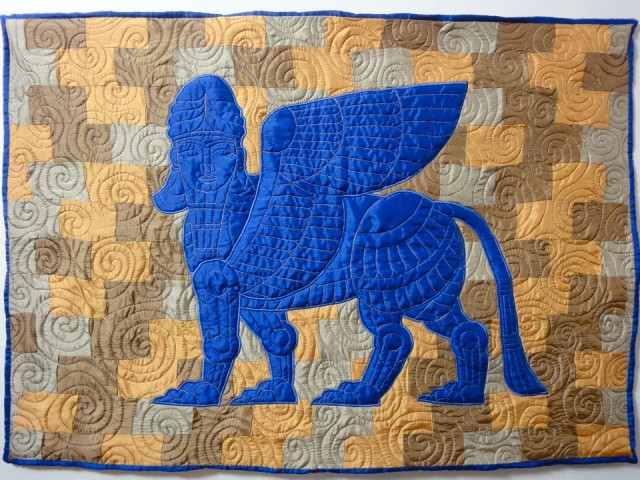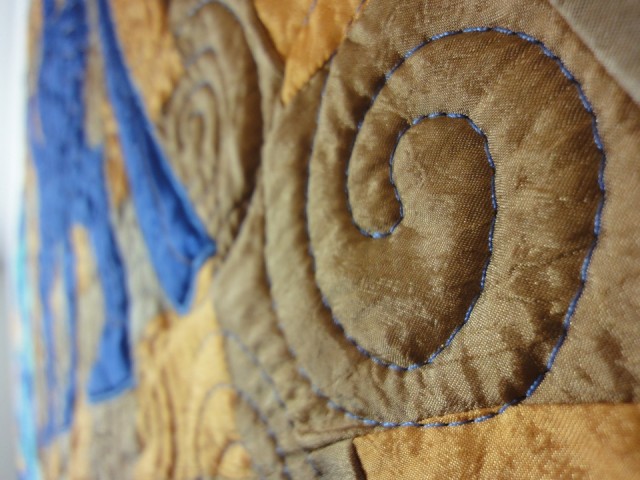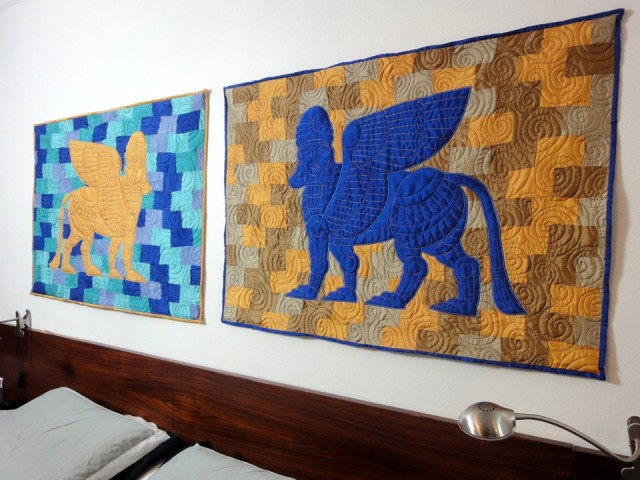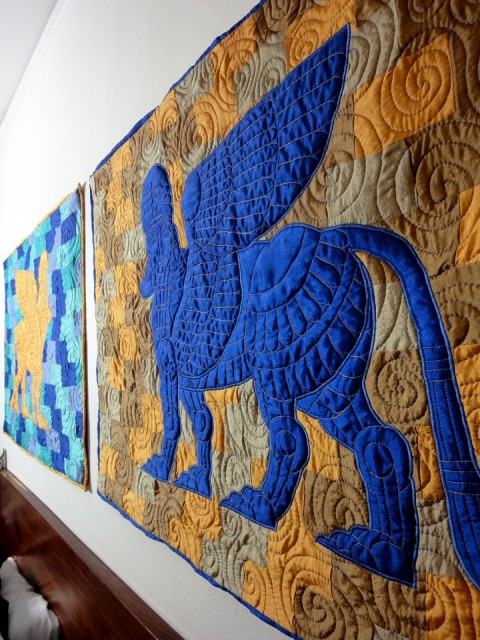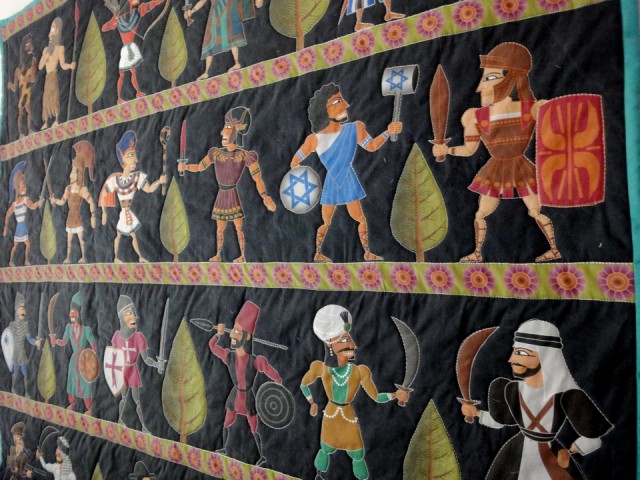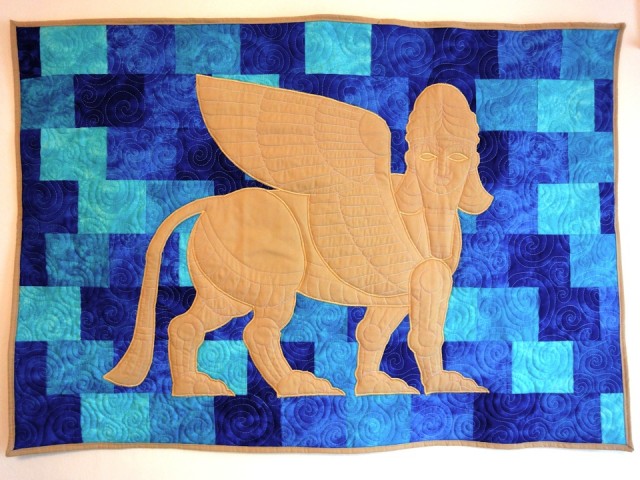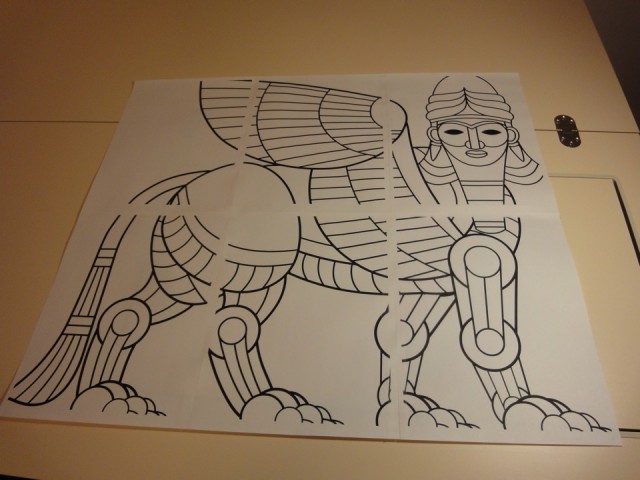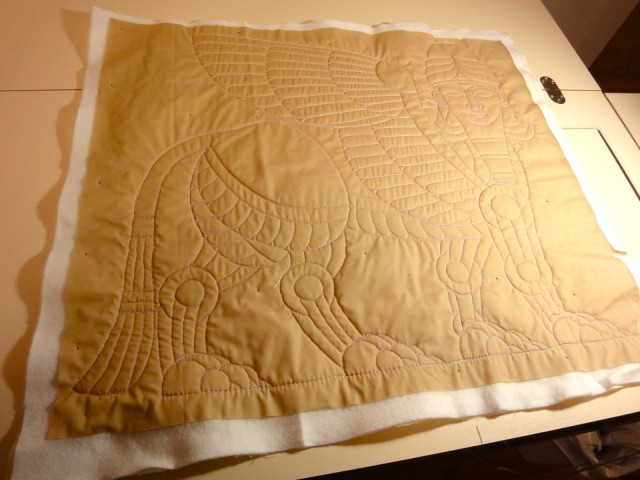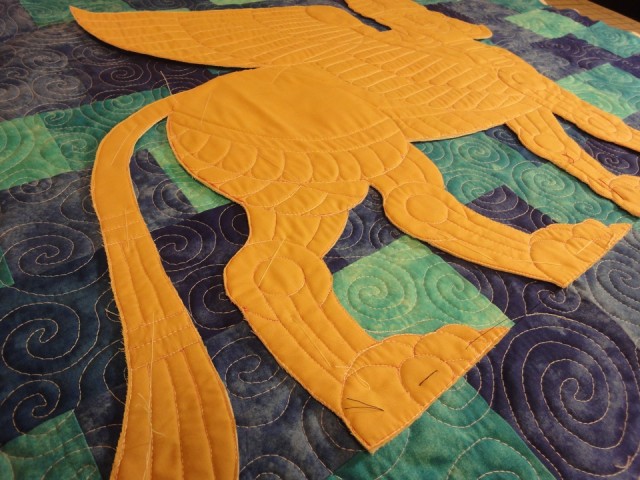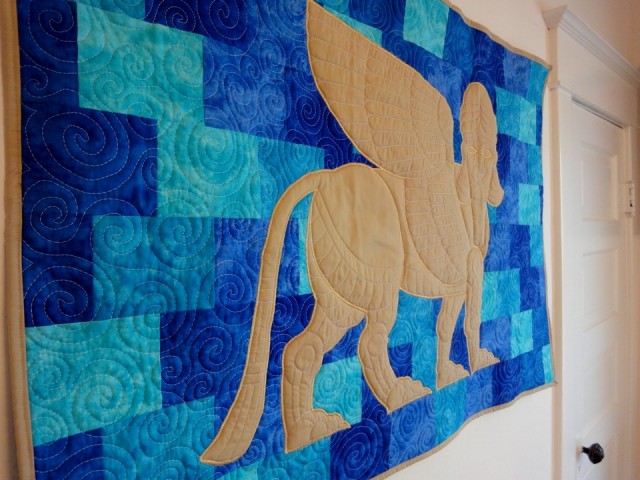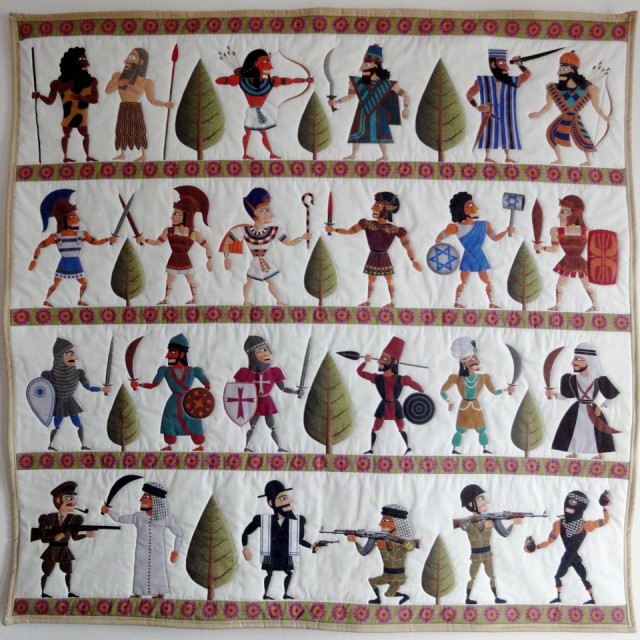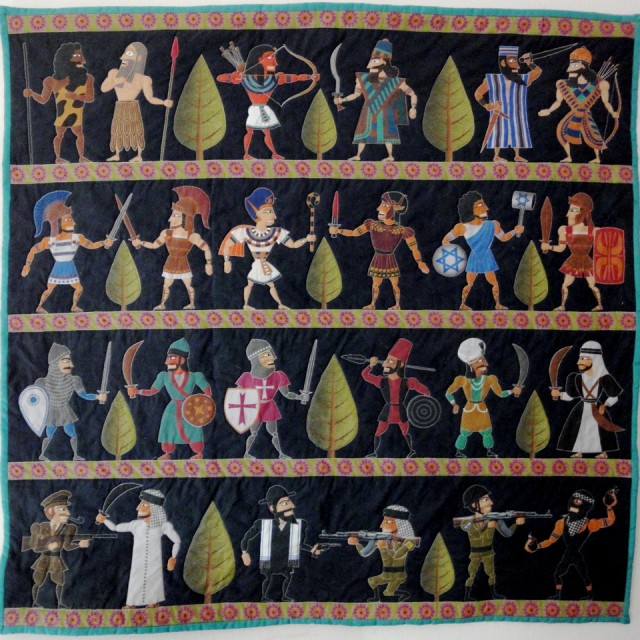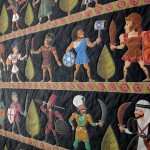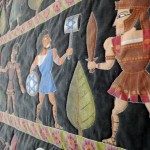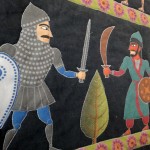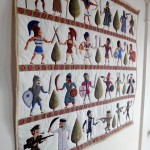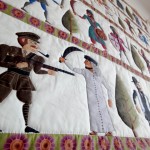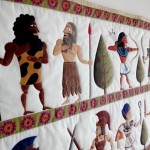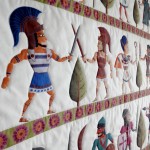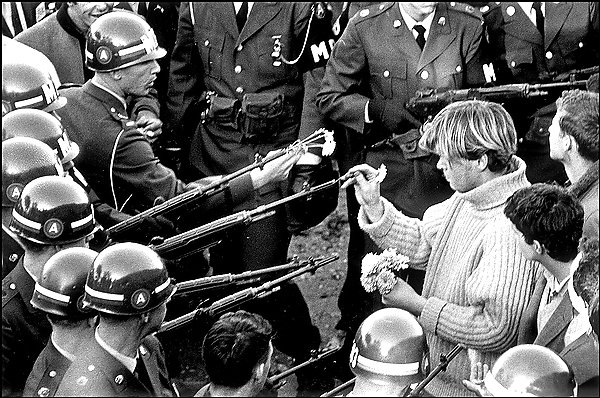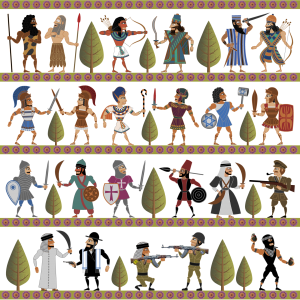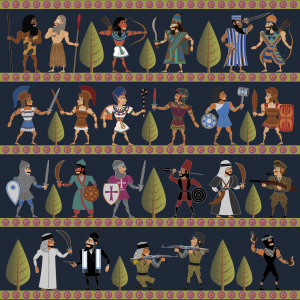If I had known how long this would take, and how unable I would be to do or think about anything else, I would never have started. But I didn’t know, so on Sunday I bought some polyester “silk”, because I’ve long wanted to quilt on silk and this was on sale and pretty and no silkworms were harmed and I could just experiment with it.
Pleased with my previous shedu quilt, I decided to make another, but with smaller, more oblong “bricks.” I cut strips and sewed them together, then cut those into more strips and sewed them in a staggered, brick-like pattern.
I’d heard polyester silk was difficult to work with, but didn’t know exactly why. Now I know. It unravels into fuzz everywhere that gets tangled in your machine.
If you don’t lock the seams down quickly, it feels like the whole thing will disintegrate. It stretches every which way, making precision cutting impossible. It’s slippery.
On the other hand, it’s beautifully iridescent and, well, silky. It’s vegan; no worms are harmed in its production. Unlike real silk, it doesn’t attract moths or other insects. It could survive an apocalypse. Needles glide through it easily. It doesn’t show needle holes, so you can rip out mistake seams with little evidence. Anyway, once I started working with it I felt I’d invested too much to stop.
I pieced together a set of gold bricks and a set of blue. Then I traced my Shedu design onto a solid gold piece, pinning down both the fabric and the paper design to minimize slippage.
I layered, basted (I had to baste about 3x tighter than usual, because the polyester is so slippery) and free-motion quilted it in light blue thread. (Speaking of fre-motion quilting, here’s a link-back to Leah Day’s blog.)
For the dark blue Shedu, I traced the same design onto while polyester silk – the blue was too dark to see through – and quilted with gold thread in the bobbin.
Flipped over, it looked just fine.
Basting and quilting the backgrounds was a huge pain, and some distortion was inevitable. I’ve heard of this thing called “fabric stabilizer” you’re supposed to use in cases like these. If I ever use poly silk again – and I swore “never again” over and over like a mantra throughout most of this project – I will try fabric stabilizer.
I thread basted the shedu trapplique cut-out onto the background, and satin-stiched it down with polyester thread.
Everything in this quilt is pure polyester – polyester fabric, polyester batting, polyester thread – except the cotton backing, which I chose for some stability.
I pinned hanging triangles on the back, and sewed them down into the binding.
I felt an urgency to finish the binding quickly, because all those little polyester threads were unraveling everywhere and needed to be locked inside. And locked inside they were – the finished pair of quilts looks nice and clean, and even feels somewhat strong.
The wide-angle lens on my pocket camera distorts these; the edges are actually pretty straight and the corners square.
They’re now hanging over my boyfriend’s bed, guarding the gates of our dreams.

